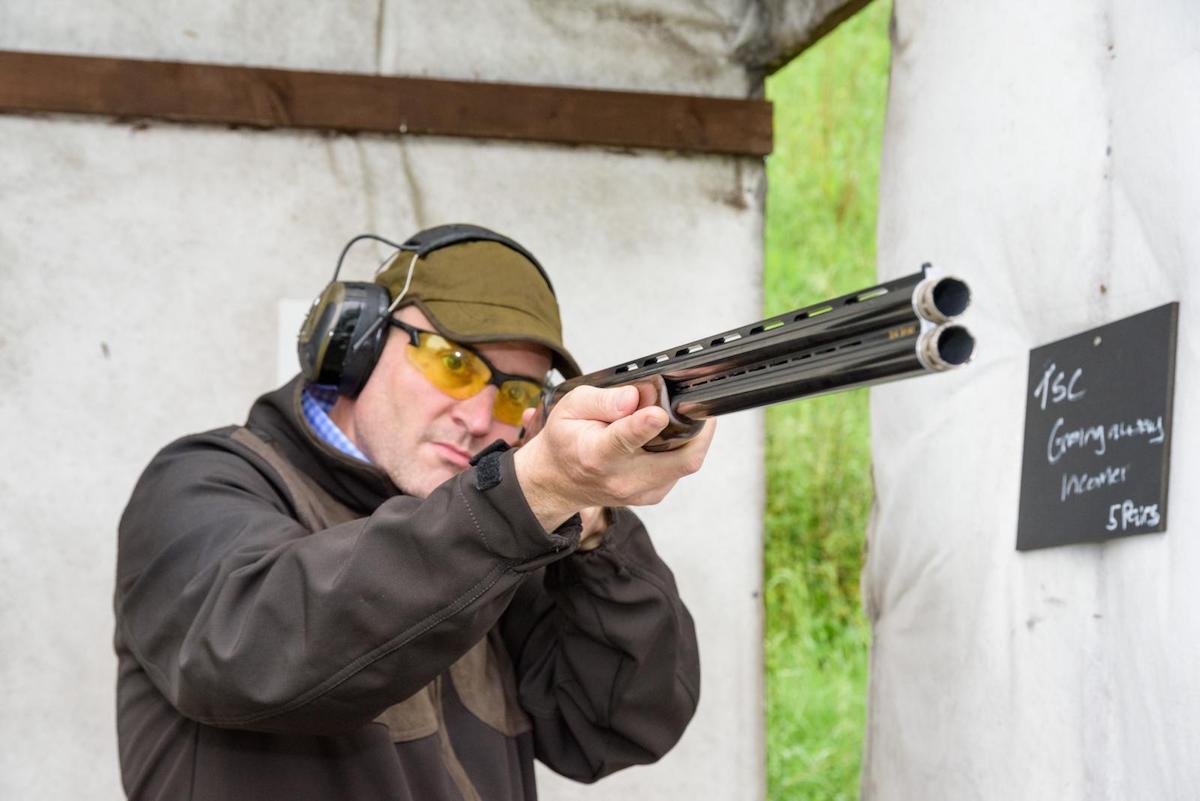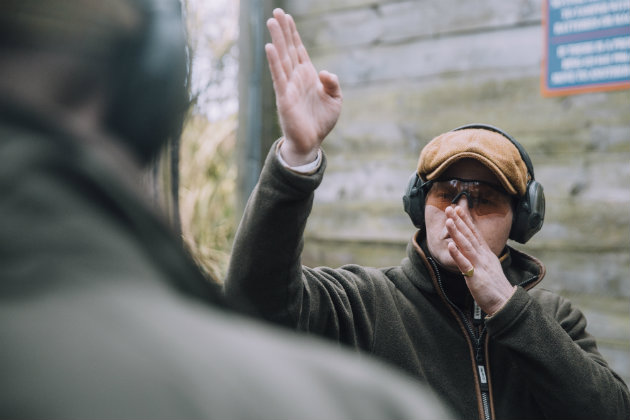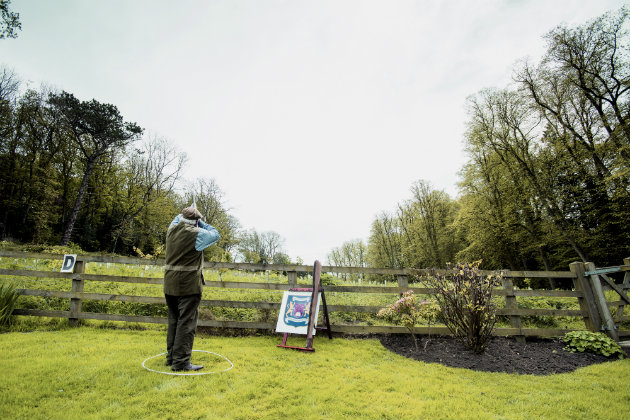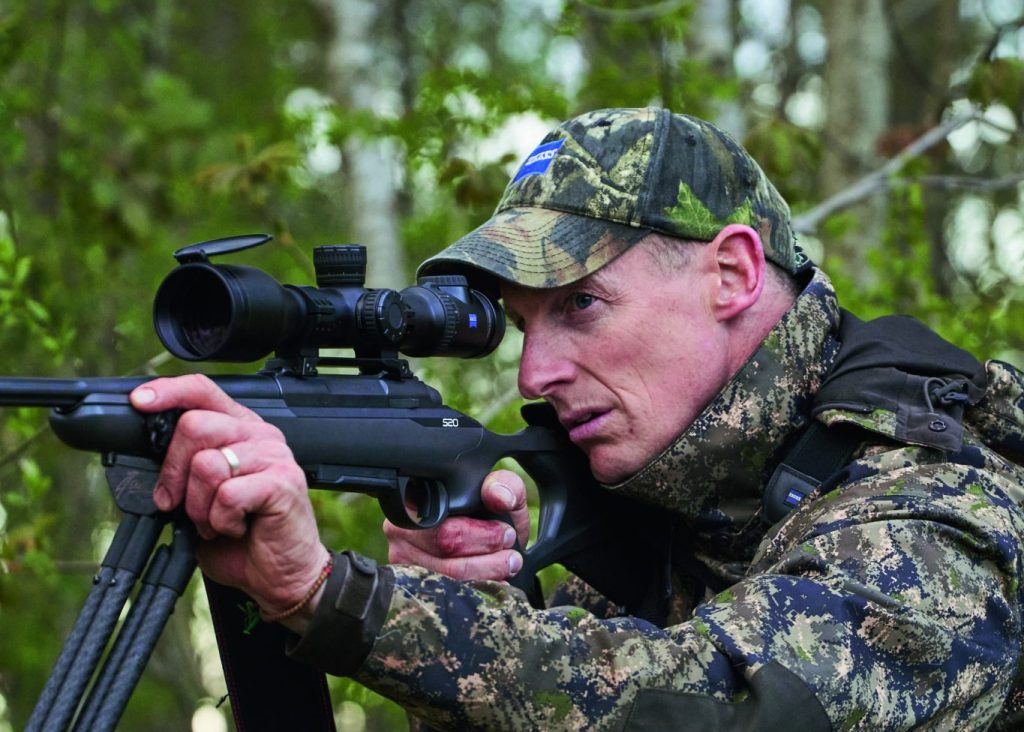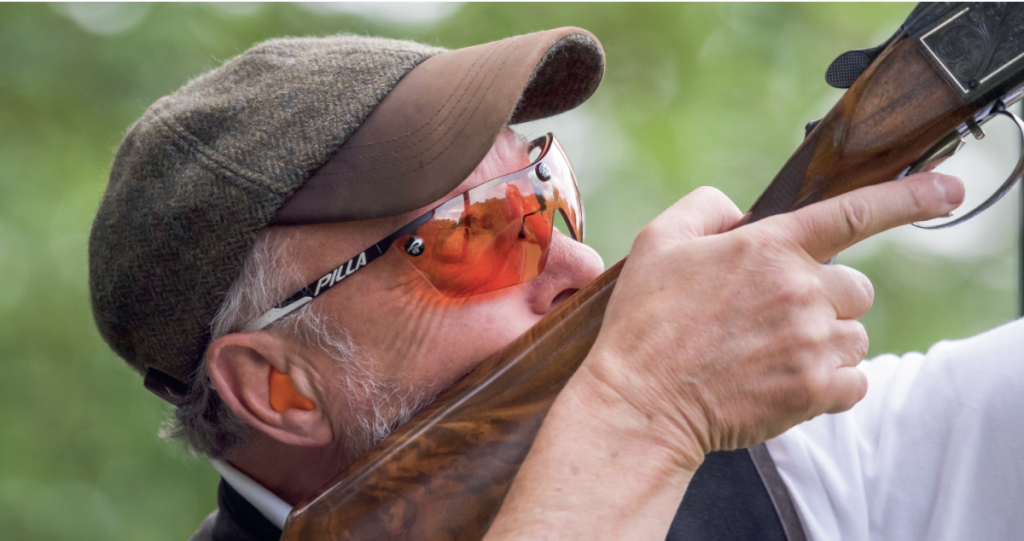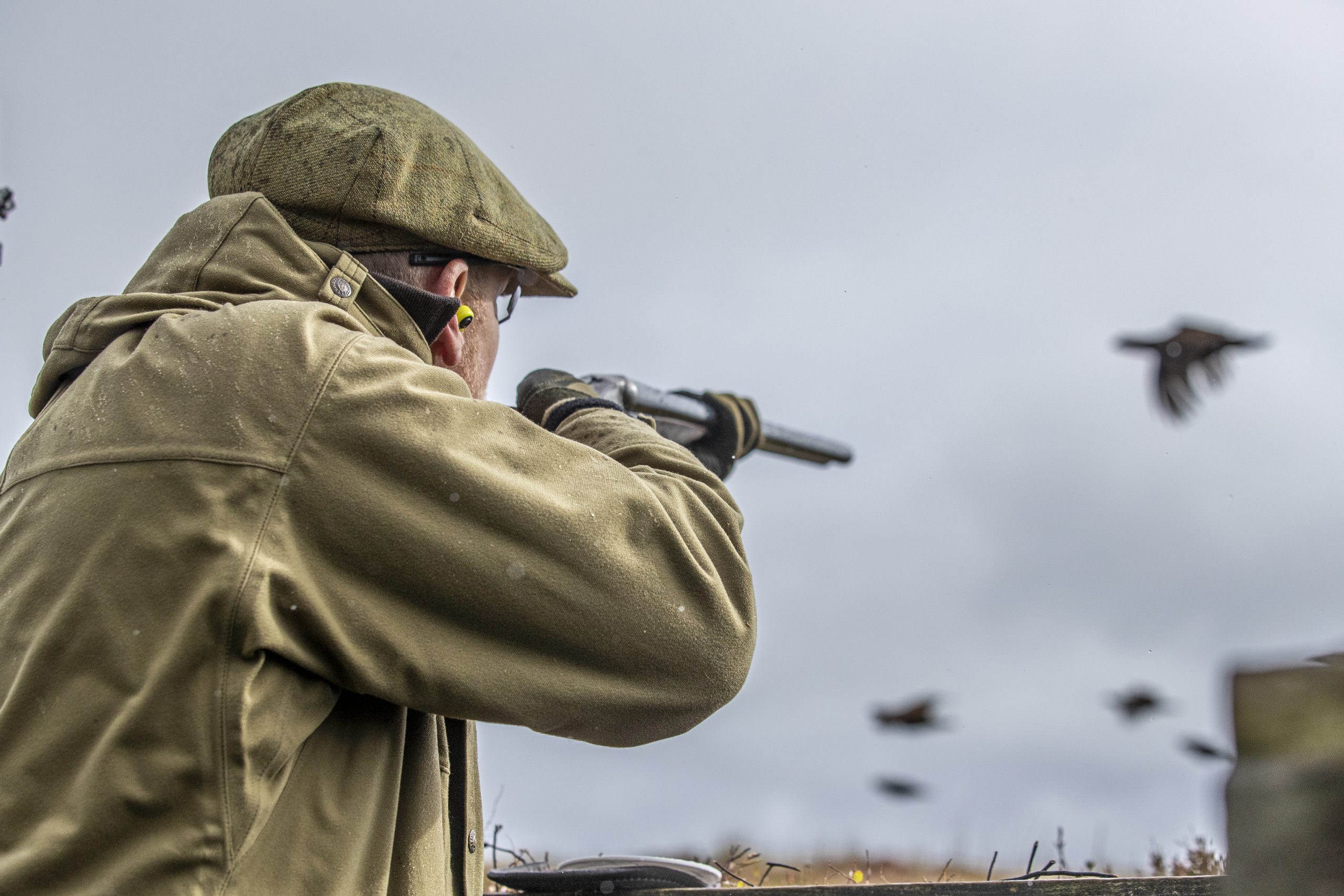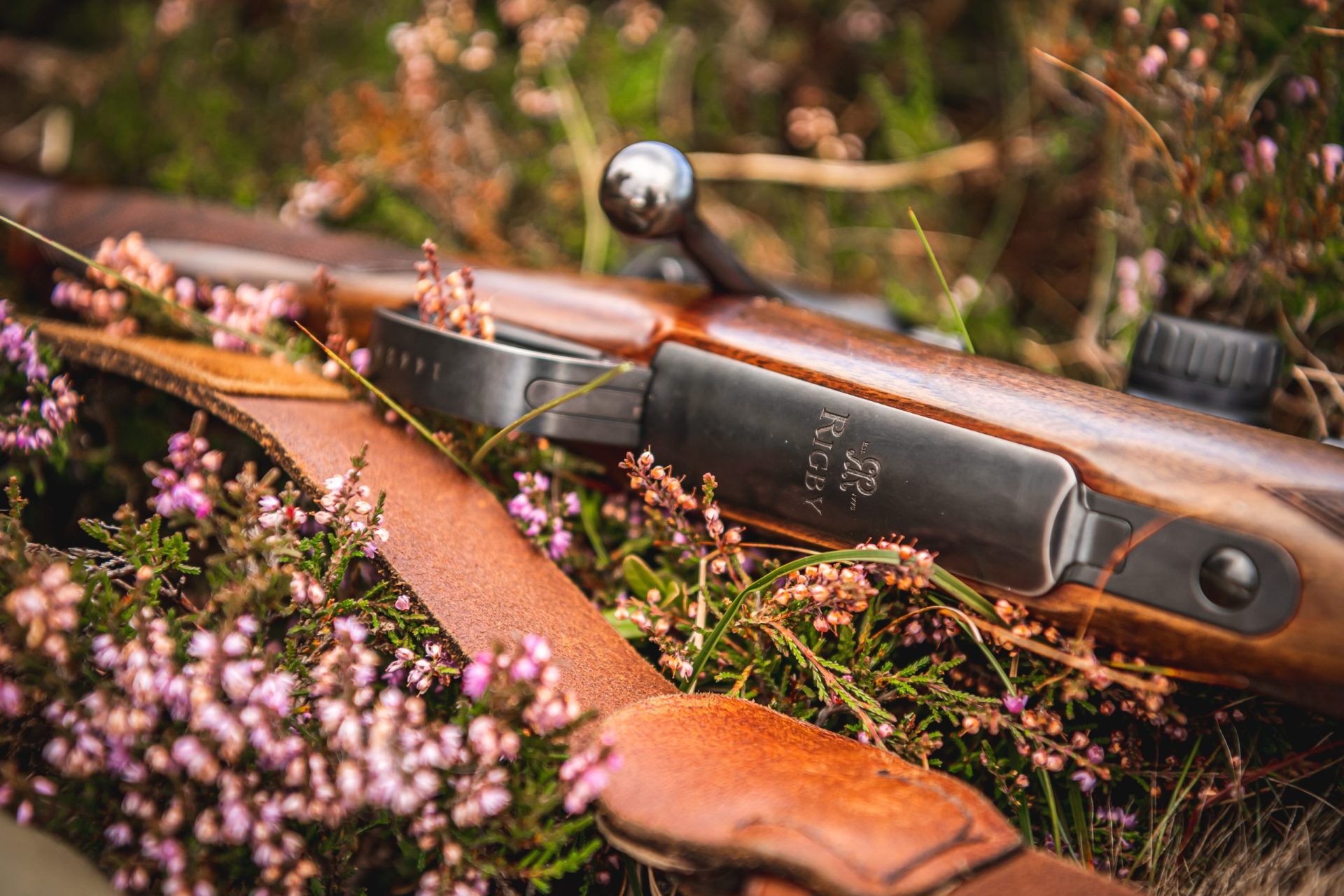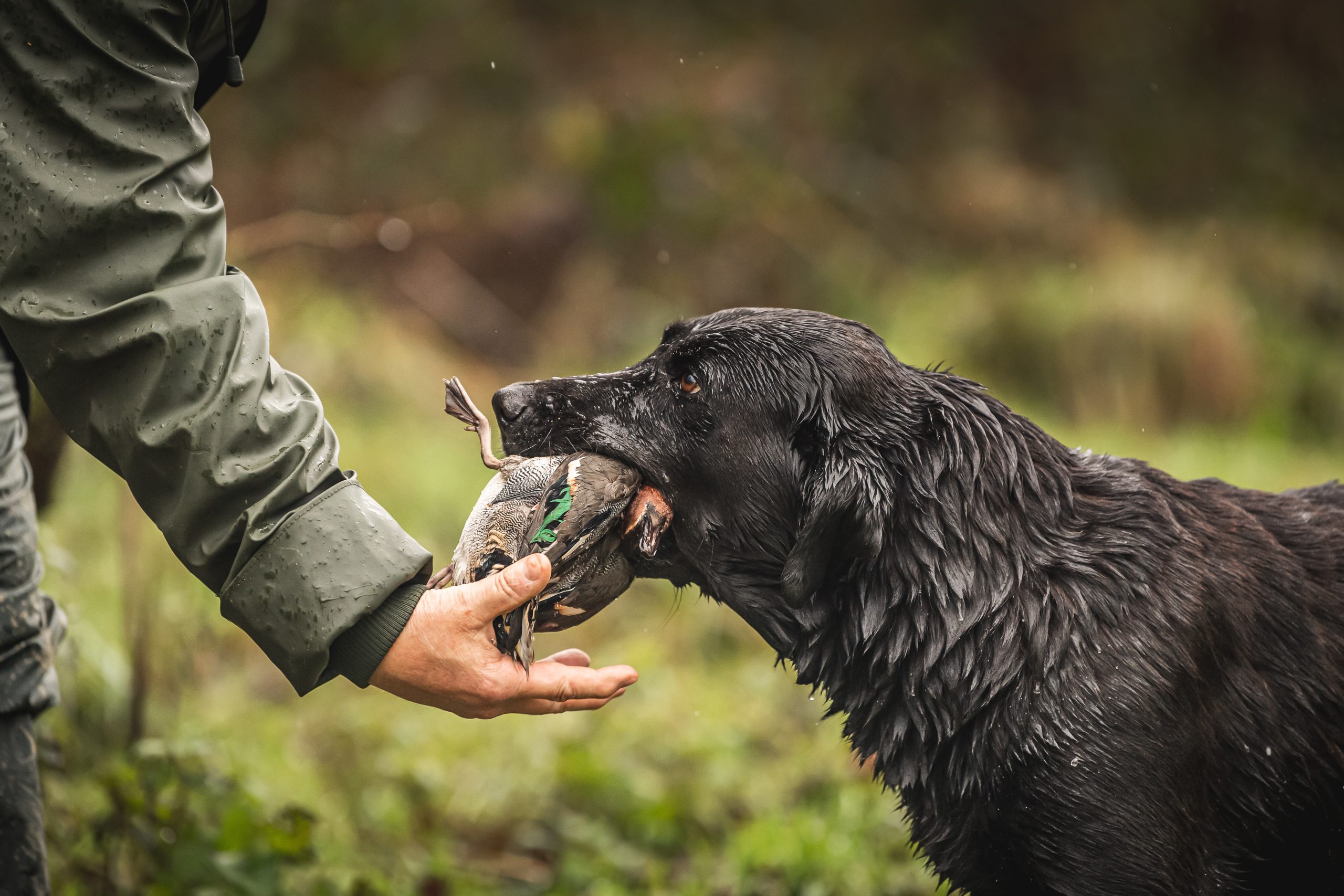Most people have a dominant eye, meaning that their brain has a neurological preference for the visual input from a particular eye. For right-handers it is usually the right eye and for left-handers the left.
In some cases the brain has no preference — this is cross-dominance. Let’s find out more about these issues with eye dominance. (Is your eyesight affecting your shooting? Here’s what you can do about it.)

With the wrong dominance, the gun will not be pointing where the shooter thinks, as can be seen in the diagram above
Both eyes open vs one closed
When we mount our gun and look along the rib with both eyes open, our brains are taking in the full picture, receiving a complete, three-dimensional view and understanding of target speed, angle and distance. Shutting an eye denies that.
A newcomer to shooting will almost always put the gun to their shoulder and naturally shut an eye to sight along the rib. They can be forgiven for thinking “that’s what you do” when using a gun that you look along and line up with a target. If it’s a have-a-go situation, then a good instructor will allow the shooter to close one eye and maybe not ever mention dominance. On the other hand, someone learning to shoot needs to understand clearly the issues with eye dominance.

With both eyes open bring the CD towards you. Your hand will naturally bring the hole of the CD to your dominant eye
How to discover your dominant eye
Point at a distant object with both eyes open and look along your arm and pointing finger, focusing on the object. Shut each eye in turn. The dominant eye should be pointing at the object; the “off” eye will be pointing way off to the side.
What do I do if I have the “wrong” dominance?
You could change shoulders and learn to shoot off the opposite shoulder. That’s a tough one for most people, but with perseverance it can be achieved. Or you could shut your “off” eye. Some struggle with this as they are not used to it.
- Some contact lens wearers use a poorer prescription for their “off” eye when shooting. (Read would prescription shooting glasses improve your shooting?)
- Some shooters put an adhesive patch on their glasses to stop the view from the “off” eye.
- There’s the ShootSP eye dominance aid – read Becky McKenzie’s full review.

Shooting with an eye patch
The problem with patches on lenses
- A patch on safety glasses is okay for shooting trap targets but not for sporting/skeet or FITASC type targets, due to the acute angles thrown up.
- Another problem with the ‘patch on the glasses’ method is that shooting glasses will always be slipping down your nose – placing the patch in completely the wrong place.
- The patch also hinders your vision and is very annoying when loading the gun and looking for pick-up points.
- To judge speed, distance and angle of the target, you will need to see the target/bird with both eyes open at first. The patch on the lens technique can hinder this. By far the best technique is to see the bird with both eyes WIDE open. (Read should I start to close an eye when shooting?)
- Once you have seen the bird you can then close the left eye and shoot the target/bird with the WIDE-open right eye, using the necessary technique to kill the target consistently.
- If the eye is open wide more light enters, so you see the target better along its entire flight path.
- When you’re practising dry mounting, try calling for the bird and then saying in your head: Two eyes, one head, bang.
- If you can’t shut/wink your eye then the patch on the glasses is the only option.
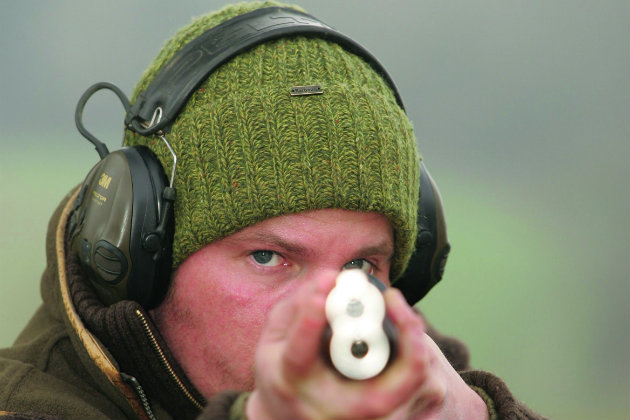
Your dominant eye should be the one you use to look along the centre of the gun’s rib
Different shooting instructors treat eye dominance differently
Some tell their pupils to close the dominant eye just as they mount the gun. Others tell you to start mounting the gun on your other shoulder.
If you can manage to do this then you won’t have any issues with eye dominance. You’ll be cured instantly because you’ll able to shoot at last with both eyes open – and have binocular vision.
Eye dominance terminology
– Absolute dominance in the eye looking down the rib – keep both eyes open and focus locked on the bird, the bird and nothing but the bird.
– Predominant dominance (one eye is predominantly but not fully dominant) in the eye looking down the rib – keep both eyes open with appropriate cast, or, squint an eye as the gun comes to the shoulder or otherwise block the vision to it.
– True cross-dominance (eg right-handed but left eye dominant) – squint/close opposite eye, block vision to it, use a full crossover stock, or change shoulders.
– Intermittent or occasional cross-dominance – probably caused by poor focus discipline or bad gun fit. Consider what rib picture you can see when the gun is mounted at 45 degrees with normal cheek pressure.
– Central vision (neither eye dominant) – close eye opposite rib, block vision to it, consider acquiring a semi-crossover stock.
– Indeterminate dominance – both eyes fighting for control, close eye opposite rib or block vision to it.




